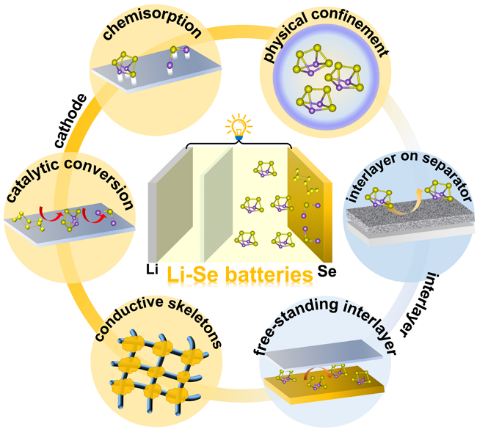Y.F. Dong, P.F. Lu, Y.J. Ding, H.D. Shi, X.L. Feng, Z.-S. Wu*
SusMat, 2021, 1, 393–412.
DOI: 10.1002/sus2.26 [PDF]

Lithium-selenium (Li-Se) batteries have attracted ever-increasing attention owing to high volumetric capacity comparable to lithium-sulfur batteries and excellent electronic conductivity of Se.However, unsatisfactory energy density and cycling life of Li-Se batteries mainly caused by low utilization of Se and shuttle effect of polyselenides (PSes) seriously prevent their commercial applications. Herein, this work systematically reviews the recent advances of the state-of-the-art cathodes and interlayers in high-performance Li-Se batteries. Firstly, the fundamental chemistries of Li-Se batteries are introduced in terms of various Se precursors and electrochemical behaviors. Secondly, the main strategies in cathodes for addressingpoor conductivity of Se and shuttle effects of PSes are summarized, including three dimensional conductive skeletons for Se, physical confinement of Se, chemisorption and catalytic conversion of PSes, and free-standing interlayers and interlayers on separators. Further, the synthesis strategies and enhanced electrochemical performancearespecially exemplified to highlight the possible enlightenments for constructing advanced cathodes and interlayers. Finally, the future challenges and perspectives of advanced cathodes and interlayers in high-performance Li-Se batteries are briefly discussed.